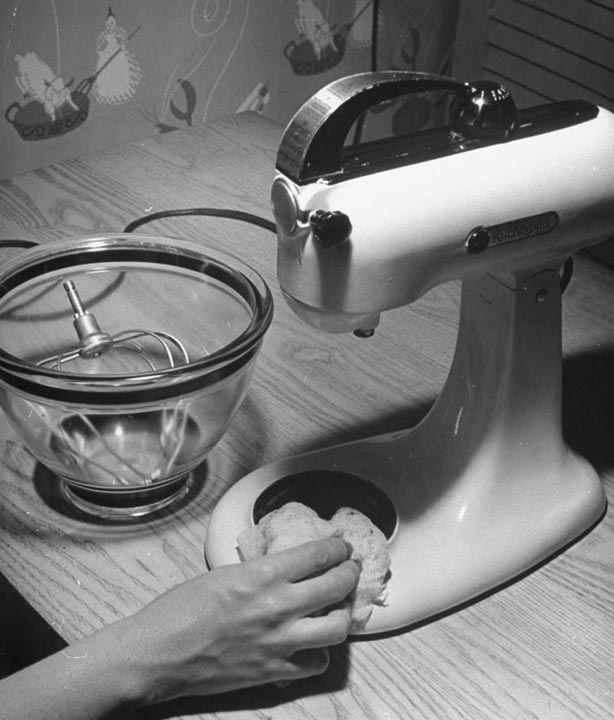 We rely on, and come into contact with, so many modern conveniences on a daily basis that it is easy to lose sight of the fact that not all that long ago many of those conveniences had not yet been imagined, let alone invented. Take the electric mixer for example. Can you fathom making cookie dough or whipping cream entirely by hand? I certainly can’t. Electric mixers are a staple in almost every kitchen, but have only been around for about 100 years, and surprisingly, their history is much more interesting than you would have thought.
We rely on, and come into contact with, so many modern conveniences on a daily basis that it is easy to lose sight of the fact that not all that long ago many of those conveniences had not yet been imagined, let alone invented. Take the electric mixer for example. Can you fathom making cookie dough or whipping cream entirely by hand? I certainly can’t. Electric mixers are a staple in almost every kitchen, but have only been around for about 100 years, and surprisingly, their history is much more interesting than you would have thought.
19th century mixer history
The predecessor to the electric mixer is something that almost every kitchen is sure to have at least one of—the whisk. Yet, the whisk itself is a relative newcomer in its modern form. Prior to the 19th century, twigs, typically from apple or peach trees, would be bundled together to create a whisk-like implement, but its purpose was often more to impart the fragrance from the wood into batters and other mixes rather than to actually mix the ingredients together. In fact, the job of “mixing” typically went to the cook’s hands. It wasn’t until the mid-19th century that the wire whisk was invented in France to aid in French cooking and subsequently introduced to the masses.
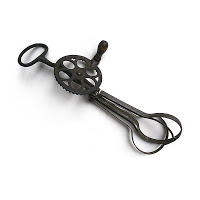 As is the case with many inventions, once the wire whisk began gaining in popularity in Europe and abroad, it became the mission of many to create a mechanical device that would make whisking and mixing even more efficient. Interestingly enough, there are competing stories as to who invented the first mixer with rotating parts. Different inventors had different ideas for what the best design for the job would be, but the vast majority of accounts attribute the first mechanized mixer to Ralph Collier, a tinsmith from Baltimore, Maryland, who patented his “Egg Beater” with rotating parts in December 1856.
As is the case with many inventions, once the wire whisk began gaining in popularity in Europe and abroad, it became the mission of many to create a mechanical device that would make whisking and mixing even more efficient. Interestingly enough, there are competing stories as to who invented the first mixer with rotating parts. Different inventors had different ideas for what the best design for the job would be, but the vast majority of accounts attribute the first mechanized mixer to Ralph Collier, a tinsmith from Baltimore, Maryland, who patented his “Egg Beater” with rotating parts in December 1856.
Collier’s invention was revolutionary for two reasons: first, it did exactly what it intended to do and made the process of beating eggs easier than it had ever been before, and second, it sparked a revolution. By that I mean that its gear mechanism was the catalyst for a number of tools we use everyday, including drills and car transmissions.
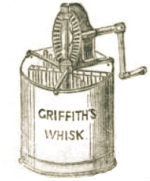 Collier’s invention of the mechanized, or rotary, eggbeater was followed swiftly by British inventor E.P. Griffith’s version in 1857. In contrast to Collier’s hand-held mixer, Griffith’s version was fixed inside a pot. Whether the pot could be removed for cleaning or not is unclear, but I have to say, it doesn’t look all that user-friendly. Just two years later in 1859 J.F. and E.P. Monroe of the US patented another hand-turned rotary mixer. It was one of the earliest patents bought by the Dover Stamping Company, and Dover eggbeaters became a classic American brand. What made their version different was their claim that this “… new and improved egg-beater … can be used with equal advantage for mixing paint or other substances which require a thorough stirring up in an open vessel in order to mix them properly …” Hmmm, interesting? Not sure about you, but I wouldn’t want to use the same device to mix my eggs and my paint. Just sayin’.
Collier’s invention of the mechanized, or rotary, eggbeater was followed swiftly by British inventor E.P. Griffith’s version in 1857. In contrast to Collier’s hand-held mixer, Griffith’s version was fixed inside a pot. Whether the pot could be removed for cleaning or not is unclear, but I have to say, it doesn’t look all that user-friendly. Just two years later in 1859 J.F. and E.P. Monroe of the US patented another hand-turned rotary mixer. It was one of the earliest patents bought by the Dover Stamping Company, and Dover eggbeaters became a classic American brand. What made their version different was their claim that this “… new and improved egg-beater … can be used with equal advantage for mixing paint or other substances which require a thorough stirring up in an open vessel in order to mix them properly …” Hmmm, interesting? Not sure about you, but I wouldn’t want to use the same device to mix my eggs and my paint. Just sayin’.
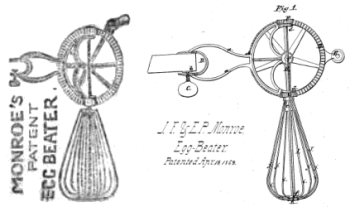
In the early 1870s a Dover eggbeater cost $1.50, but by 1880 you could pick one up for $1.25. As time wore on and the number of patents for eggbeaters increased along with competition, their price came down drastically, and by 1912 you could snag one for about $0.05. Competition in the market was fierce, especially with the advent of the first mixer designed with an electric motor. It was thought to be invented by American Rufus Eastman in 1885, and interestingly enough, Eastman’s patent wasn’t just for a mixer but for a “mixer for cream, eggs, and liquors.” Makes sense to me!
These days you can pick up an egg beater at any houseware, general, or department store.
Early 20th century mixer history
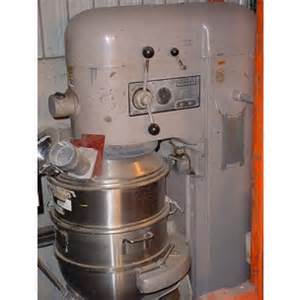 Like many home appliances, what would become the first standing mixer has industrial ties? The year was 1908 and Herbert Johnson, an American engineer for the Hobart Manufacturing Company, was observing a baker laboriously mixing a large amount of dough with a metal spoon. The work was so laborious he actually dripped perspiration into the dough.
Like many home appliances, what would become the first standing mixer has industrial ties? The year was 1908 and Herbert Johnson, an American engineer for the Hobart Manufacturing Company, was observing a baker laboriously mixing a large amount of dough with a metal spoon. The work was so laborious he actually dripped perspiration into the dough.
Determined to create a “sweatless” mechanical mixing device, what Johnson invented revolutionized Eastman’s electric eggbeater. The mixer was unique because of his concept of “planetary action,” where the mixer moves the bowl in a circular motion in one direction while the beater rotates in the opposite direction.
By 1915, because of its heaviness and capacity for a massive 80 quarts, Johnson’s Hobart mixer, simply named “Model H,” was standard equipment in many commercial bakeries and on all U.S. Navy vessels. Johnson had been working on a scaled down version for residential use, but before Hobart could enter the market, WWI intervened. That said, by 1918 Hobart company executives were testing models in their homes, and as legend has it, the wife of one executive said: “all I know is it’s the best kitchen aid I’ve ever had.” The name stuck.
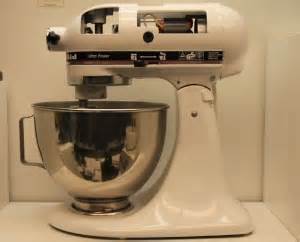 In 1919 Hobart introduced the newly named KitchenAid Food Preparer (stand mixer) for the home. Aimed at home bread bakers, the first 5-quart KitchenAid weighed 65 pounds and sold for $189.00, which equates to about $2,000 today. In the early years, retailers were somewhat resistant to taking on the KitchenAid mixer, so to counter their reluctance, Hobart established a direct sales force made up primarily of women to go door to door and offer demonstrations. These demonstrations that were made more convincing with the addition of a citrus juicer and food grinder attachment, also available in 1919, and KitchenAid stand mixers were on the road to becoming the “must have” device in every kitchen, regardless of price.
In 1919 Hobart introduced the newly named KitchenAid Food Preparer (stand mixer) for the home. Aimed at home bread bakers, the first 5-quart KitchenAid weighed 65 pounds and sold for $189.00, which equates to about $2,000 today. In the early years, retailers were somewhat resistant to taking on the KitchenAid mixer, so to counter their reluctance, Hobart established a direct sales force made up primarily of women to go door to door and offer demonstrations. These demonstrations that were made more convincing with the addition of a citrus juicer and food grinder attachment, also available in 1919, and KitchenAid stand mixers were on the road to becoming the “must have” device in every kitchen, regardless of price.
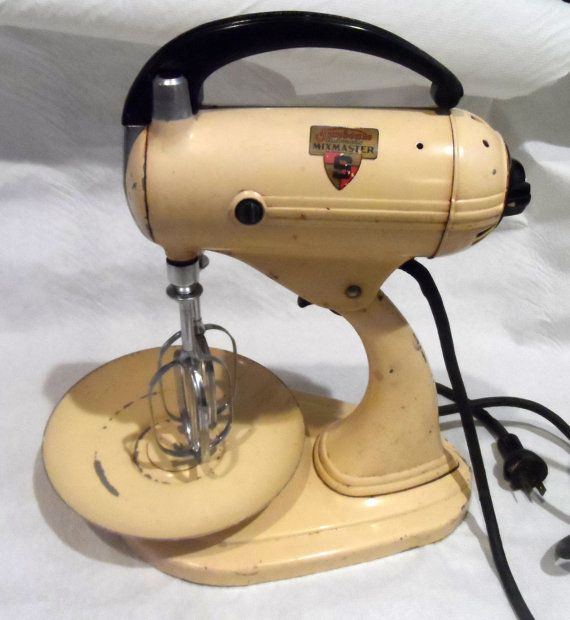 That’s when Sunbeam entered the scene with its MixMaster in 1930–a stand mixer available at the fraction of KichenAid’s weight and price (just $18.25 or about $300 in today’s money). The competition was real and it was fierce. While KitchenAid had also been working on smaller, more affordable models during the time, it wasn’t until 1936 that they recruited the services of Egmont Arens. He was a renowned pioneer in the field of industrial design, and the Model H was refined into KitchenAid’s now patented bullet-shape design, complete with a price chop to $55.
That’s when Sunbeam entered the scene with its MixMaster in 1930–a stand mixer available at the fraction of KichenAid’s weight and price (just $18.25 or about $300 in today’s money). The competition was real and it was fierce. While KitchenAid had also been working on smaller, more affordable models during the time, it wasn’t until 1936 that they recruited the services of Egmont Arens. He was a renowned pioneer in the field of industrial design, and the Model H was refined into KitchenAid’s now patented bullet-shape design, complete with a price chop to $55.
Fast forward to the last 40 years
For about 40 years, the electric mixer market was dominated by the dynamic duo of Sunbeam and KitchenAid, but that all changed in 1973 when Carl Sontheimer, who only one year prior was enamored by a demonstration of a food preparation machine and decided to make one of his own, launched his Cuisinart Food Processor. Determined to make his stand mixer a kitchen staple, he took his machine to food authorities like James Beard, Julia Child, and Helen McCully, and used their accolades to position Cuisinart as a worthwhile investment for serious home cooks. In 1977, Cuisinart’s mixer business exploded, with sales soaring from a few per month to hundreds per month.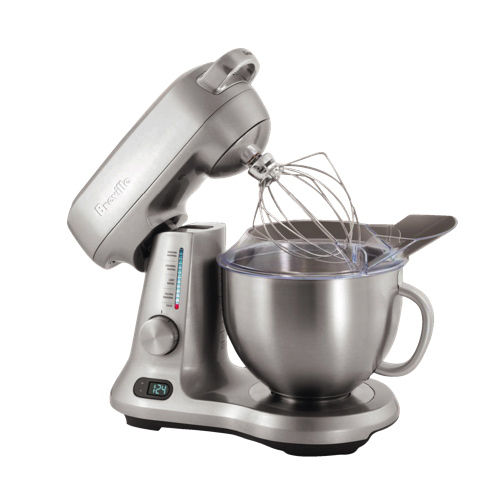
At the same time, the stand mixer market dramatically expanded to include more than a dozen brands representing over 30 models. Some of those brands didn’t stand the test of time, but many did, and modern incarnations of Cuisinart’s “Food Processor”, and Breville’s Kitchen Wizz, which was invented in 1977 in Australia and brought to Canada in 2002 remain dominant forces on the market today.
The electric mixer is something the vast majority of us take for granted. They dramatically speed up the food preparation process to make what used to take 15 minutes take 15 seconds; and each one can be attributed to a sequence of events in history that have taken us from twig whisks to appliances that make the idea of “by hand” as foreign a concept as black and white TV.




This was so interesting!! I have a few hand mixers my Grandma used in the 40’s, and I’ve put them in a shadow box in my kitchen. After reading this I’ll probably never look at them the same way again!
Comments are closed.